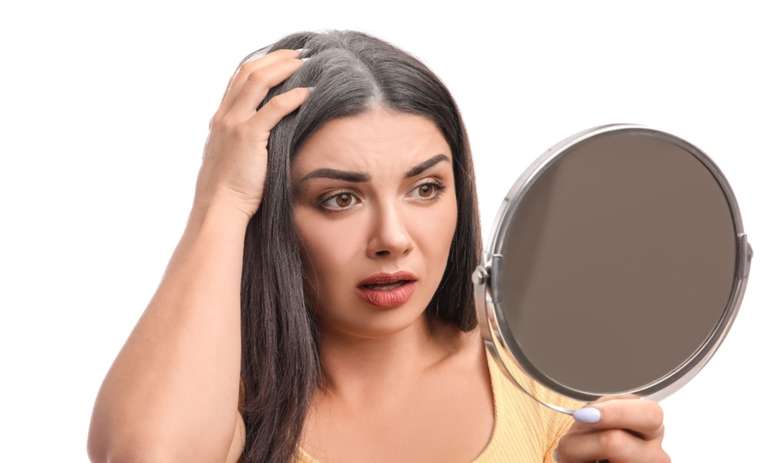In addition to hair loss, medicine recognizes the impact of stress on the emergence of white hair
Who has never heard the expression “so -and so it makes me white hair”? The white threads have always been synonymous with stress, as well as representing clear and natural aging. According to medicine, this relationship is real and the great culprit is cortisol, known as “stress hormone”.
“The problem is represented by constant discharges of cortisol, stress hormone, in the bloodstream. A person who suffers from recurring stress is more likely to be influenced by these physical symptoms, who can include aging of the skin and also the sudden change in hair color, making gray more gray”, explains the Brazilian member of Lilian of the Brazilian society. Dermatology).
This phenomenon that causes hair coating is called Canicie and has two causes:
- Production arrest of melanin (the pigment that gives color to the hair) from the cells responsible for the production (melanocytes);
- Failure to transfer pigments produced to the hair, which occurs for damage to cells by oxidative stress.
Structure of the wire
Capillary follicles contain melanocytes, cells that produce pigments. As we age, the number of melanocytes decreases and our hair starts to be gray and eventually white, explains the dermatologist.
“With aging, there is also an accumulation of hydrogen peroxide at the root, and this can also lead to a reduction in pigmentation,” says the doctor.
What can leave white hair
The exact age in which hair aging occurs is predetermined by genetics. However, bad habits (such as smoking or bad nutrition) can aggravate the hair color change rate. In addition, health conditions such as anemia, vitamin B deficiency or thyroid disease can also accelerate the process.
In addition, stress can also leave gray hair. “Research has suggested that stress can influence the sympathetic nervous system and cellular mitochondria, causing aging from different mechanisms. Stress hormones can influence the survival of melanocytes in our hair,” says Lilian.
However, further studies are needed to clarify the connection between stress and gray hair. “Instead, there are only a few small studies that show that it can be one of the many factors that contribute to this change of color,” adds the expert.
However, it is known that stress contributes to hair aging as it leads to oxidative damage that can cause damage to pigment cells, leading to a lower production of melanin.
It is also noteworthy that, in the field of hair, stress is more recognized as a risk factor for hair loss than for canicies. This type of hair loss, known as an effluvium by teogen, occurs when someone suffers from physical or mental stress.
“Stress can cause synchronize a large number of strands of hair and fall more than usual.
Tips to accept – and take care of – white hair
For those who decide to embrace the new silver threads, one of the best ways to take care of them is with products that focus on hydration. “Many people realize that the consistency of the hair changes when the hair becomes gray, becoming rough and dry hair. Therefore, it is important to use less aggressive shampoos and good conditioners to return the moisture to the hair auction. The patient can also resort to products with blue pigments to soften accurate and yellow tones”, explains the doctor.
Finally, the doctor stresses that having gray hair is not a bad thing. “It is a normal part of the aging process and must not be correct. It is interesting to see that people have really adopted gray hair recently. I think this is not just a trend, but a paradigm shift that really speaks of our acceptance of beauty in all its forms and, above all, while we age”, concludes.
Source: Terra
Ben Stock is a lifestyle journalist and author at Gossipify. He writes about topics such as health, wellness, travel, food and home decor. He provides practical advice and inspiration to improve well-being, keeps readers up to date with latest lifestyle news and trends, known for his engaging writing style, in-depth analysis and unique perspectives.








